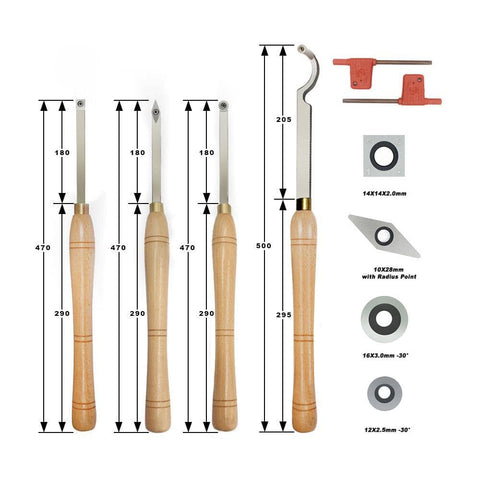

Wood lathe turning is an age-old craft that has fascinated artisans and woodworkers for centuries. It is a form of woodworking that involves rotating a piece of wood on a lathe while shaping it with sharp tools to create symmetrical and artistic objects. This unique blend of functionality and artistry allows creators to bring out the natural beauty of wood in a way that highlights its grain, texture, and inherent character. Whether you're crafting elegant bowls, intricate spindles, or delicate ornaments, wood turning offers an opportunity to explore the creative potential of this versatile material.
At the heart of lathe turning is the selection of the wood itself. Each type of wood brings its own characteristics to the process, influencing the ease of turning, the final finish, and the overall appearance of the product. Hardwoods, such as maple, walnut, and cherry, are prized for their density and durability, making them ideal for creating intricate designs and pieces that will last for generations. Softwoods like pine or cedar, on the other hand, are easier to work with, making them suitable for beginners or projects requiring less detailed precision.
One of the most appealing aspects of wood lathe turning is the ability to transform a raw, unprocessed log or block into something both useful and beautiful. The lathe allows for precise control over the shape and size of the object being created, whether you're aiming for a perfect cylindrical form or something more organic and flowing. With the right techniques, a piece of wood can be carefully shaped into bowls, vases, goblets, or even finely crafted chess pieces. The art lies not only in the turning itself but in the selection of tools, techniques, and finishes that bring out the unique qualities of each type of wood.
The grain pattern of wood plays a crucial role in how the finished product will look. A skilled wood turner knows how to work with the grain, enhancing its natural flow and structure to achieve a smooth, polished result. For instance, turning along the grain creates a very different effect compared to turning across it, each revealing distinct patterns and textures. This interaction between tool and material makes lathe turning an intensely tactile and mindful process, where understanding the nuances of wood is just as important as mastering the equipment.
Another important consideration in wood lathe turning is moisture content. Green wood, which is freshly cut and retains much of its natural moisture, is easier to turn but may warp or crack as it dries. Seasoned or kiln-dried wood is more stable and less prone to deformation, but it can be harder to work with, requiring more skill and sharper tools. Many woodworkers prefer to turn green wood first, allowing it to dry gradually before giving it a final sanding and finish to ensure its long-term stability.
Wood finishing is the final step in the lathe turning process, where the raw wood is transformed into a lustrous, polished object. Different finishes can be applied, from oils and waxes that enhance the natural color of the wood, to varnishes and lacquers that provide a high-gloss, protective coat. The choice of finish depends on the desired aesthetic and functional qualities of the piece. Some turners prefer a matte, natural look that highlights the grain, while others opt for a smooth, reflective surface that adds a touch of refinement and elegance.
Lathe turning also offers endless creative possibilities for combining different woods or even integrating other materials like metal or resin. Inlays, patterns, and segmented designs can be incorporated to add complexity and visual interest to the final piece. Some turners experiment with staining or dyeing the wood to create bold, vibrant effects that stand out from the natural tones typically associated with wooden objects.
One of the most rewarding aspects of wood lathe turning is the meditative, hands-on nature of the craft. The rhythmic spinning of the lathe, combined with the steady application of chisels and gouges, creates a calming, almost hypnotic experience for the turner. It's a balance of precision and intuition, where every movement influences the final outcome. This connection between the maker and the material fosters a deep sense of satisfaction, as each completed piece is a unique expression of both skill and creativity.
Wood lathe turning is more than just a woodworking technique; it's an exploration of the natural world's beauty, translated into functional art. Each piece of wood carries its own story, from the life of the tree to the hands that shape it. In this ancient craft, every cut, every curve, and every grain pattern becomes part of a larger narrative - a timeless dance between human ingenuity and nature's raw elegance.
